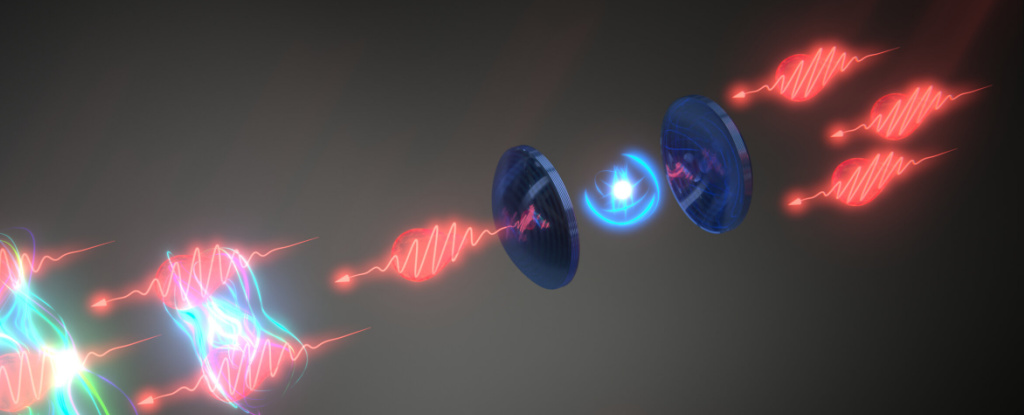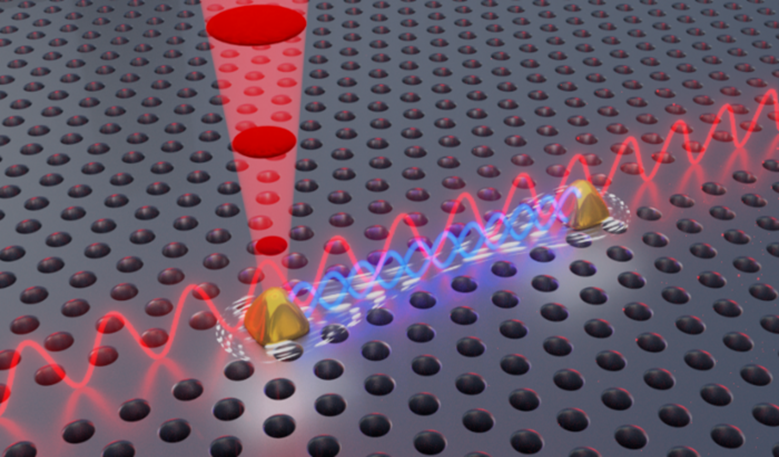In a huge breakthrough, physicists have succeeded for the first time in controlling 'quantum light'.

For the first time in history, an international team of physicists has managed to control small numbers of light particles - known as photons - that have a strong relationship with each other.
This may sound a little mysterious, but it represents a major breakthrough in the quantum field that could lead to technology we can't even dream about right now. Imagine lasers, but with quantum sensitivity, for medical imaging.
"This opens the door to the control of what we might call 'quantum light'," says physicist Sahand Mahmoudian of the University of Sydney.
"This fundamental science opens the way toward advances in quantum-enhanced measurement techniques and photonic quantum computing."
While physicists get pretty good at controlling entangled quantum atoms, it's proving more challenging to do the same with light.
In this new experiment, a team from the University of Sydney and the University of Basel in Switzerland fired a single photon and a pair of correlated photons at a 'quantum dot' (an artificial atom) and were able to directly measure the time delay between the single photon and the one that was correlated.
“The device we built caused such strong interactions between photons that we were able to observe the difference between one photon interacting with it compared to two,” says physicist Natasha Tom, co-lead author from the University of Basel.
“We noticed that one photon was delayed longer than two photons. With this strong interaction between the photons, the two photons become entangled in a way called the “photon bound-by-two” state.

They made this related case using "stimulated emission": (a phenomenon first described by Albert Einstein in 1916 that forms the basis of modern lasers).
(Fun fact: LASER is an acronym for “Light Amplification by Stimulated Emission of Radiation.”)
Within a laser, an electric current or a light source is used to stimulate electrons within atoms of an optical material such as glass or crystal.
This excitation raises the electrons to a higher orbital in the nucleus of their atom. When it returns to its normal state, energy is emitted in the form of photons. This is “induced emission,” and this process means that all the photons produced are of the same wavelength, unlike normal white light which consists of a mixture of different frequencies (colours).
The mirror is then used to bounce the old and new photons back towards the atoms, thus stimulating more identical photons to be generated.
These photons move in unison, travel at the same speed and direction, and build up until they finally overcome the mirrors and the optical medium and emit perfectly synchronously a beam of light that can remain precisely focused over long distances.
All of these processes happen in a split second when you press the button on your laser pointer (thanks, Einstein).
This wonderful process between light and matter underlies all kinds of amazing technology, such as the Global Positioning System (GPS), computers, medical imaging, and global communications networks. Even the Laser Interferometer Gravitational-Wave Detector (LIGO), which detected gravitational waves for the first time in 2015, relies on lasers.

But all this technology still requires a lot of photons, which limits its sensitivity.
The new openness has now achieved the stimulated emission and detection of individual photons, as well as small groups of photons from a single atom, causing them to be strongly correlated, in other words "quantum light".
This represents a huge step forward.
"When we prove that we can identify and control the correlated states of photons, we take a vital first step toward putting quantum light to practical use," says Mahoudian.
Mahmoudian explains that the next steps are to use the approach to generate states of light that could make quantum computers even better.
"This experiment is beautiful, not only does it prove a fundamental effect - induced release - in its final limits, but it also represents a huge technological step towards advanced applications," Tom adds.
“We can apply the same principles to develop more efficient devices that give us the states of correlated photons. This is encouraging for use in a variety of fields: (from biology to advanced manufacturing and quantum information processing).”
Source : websites

